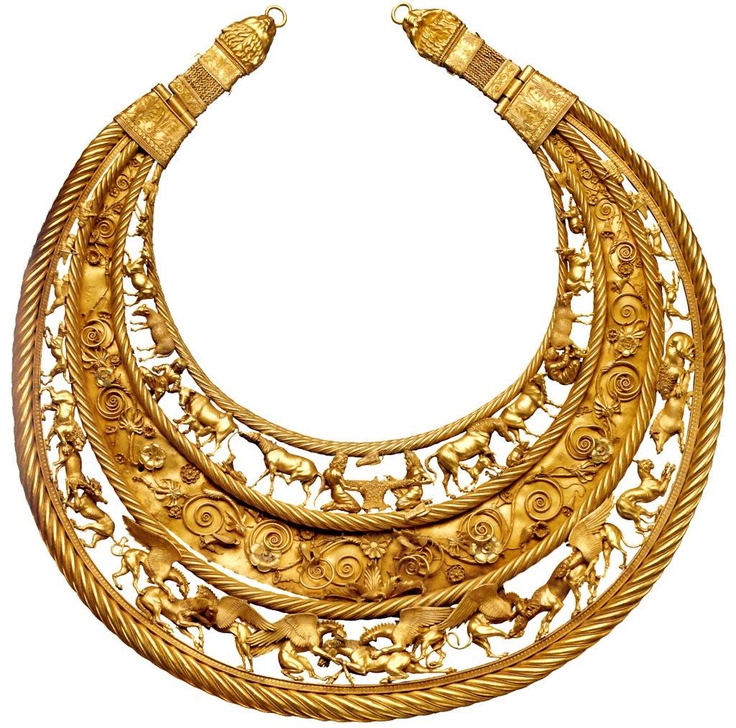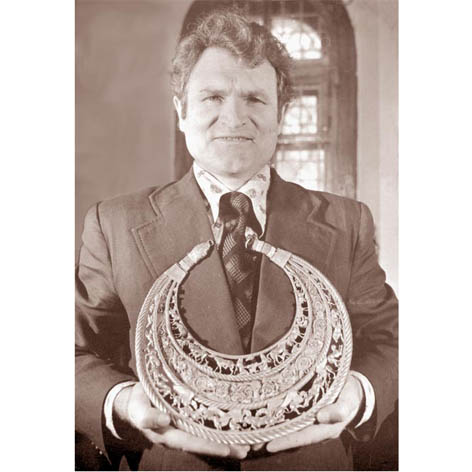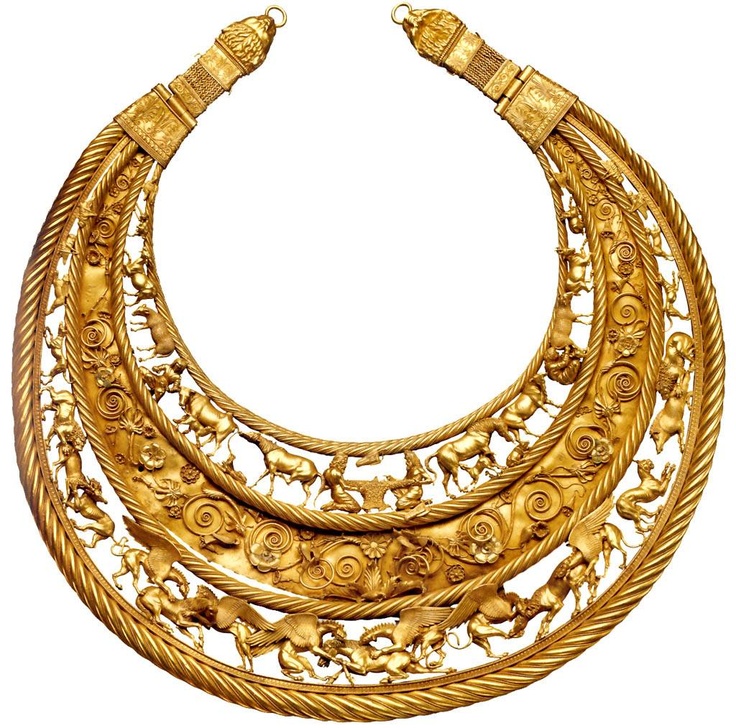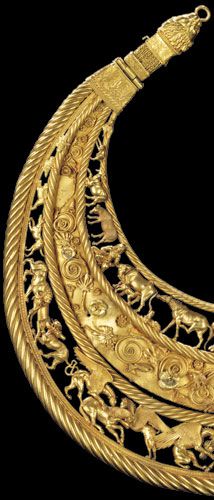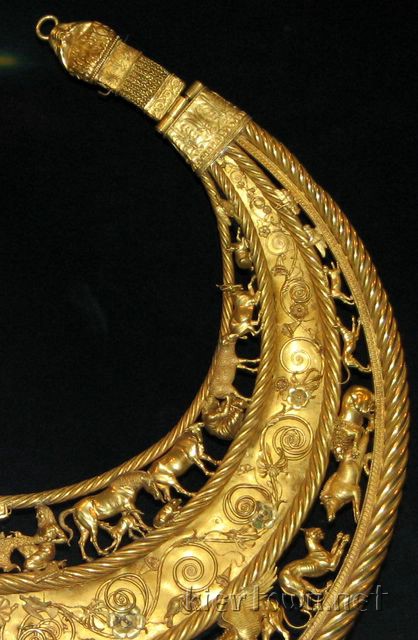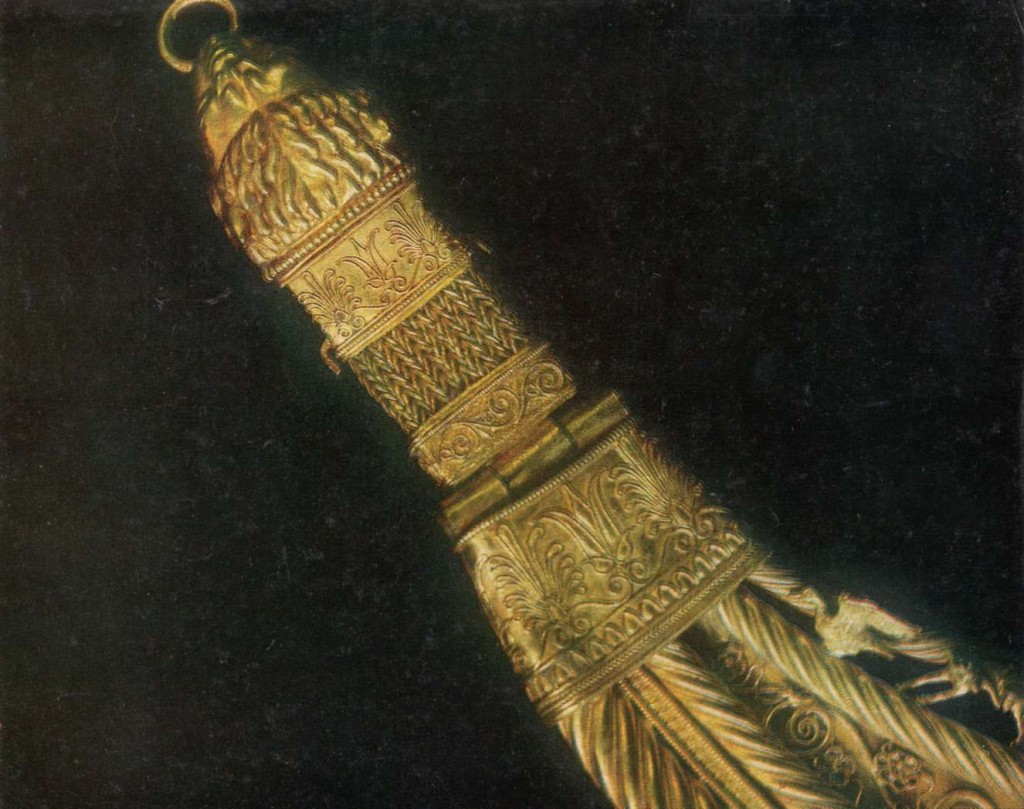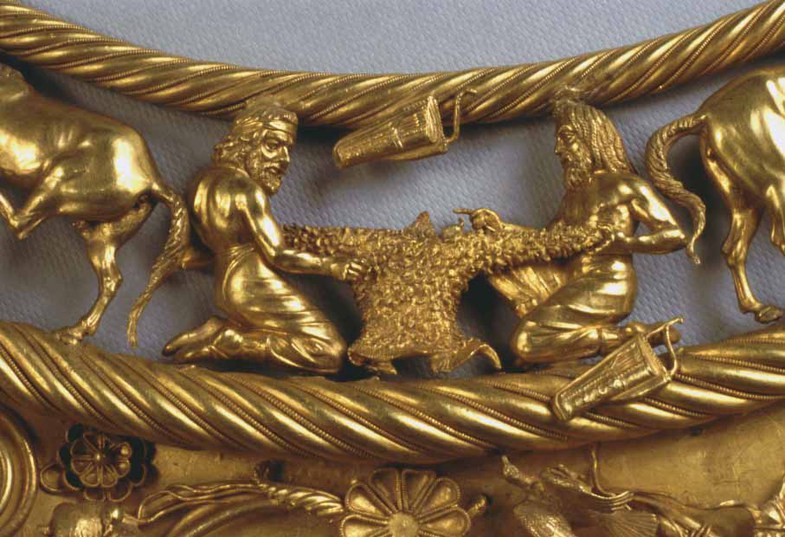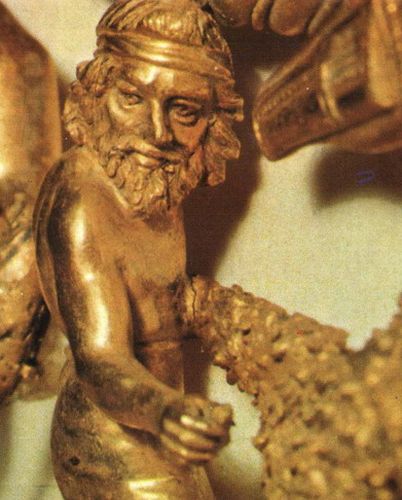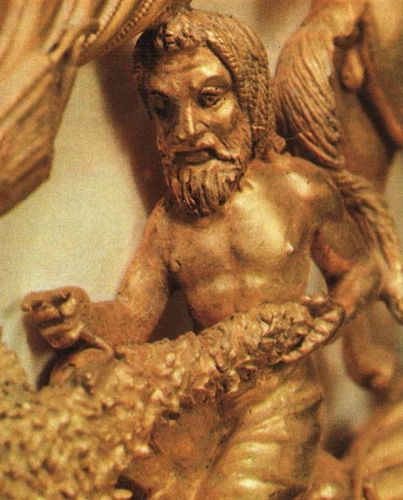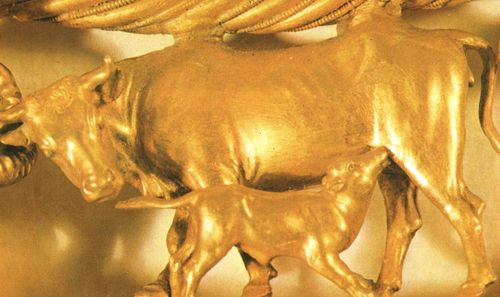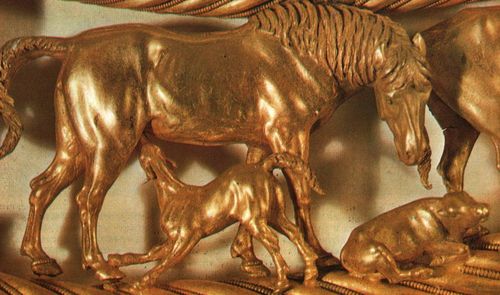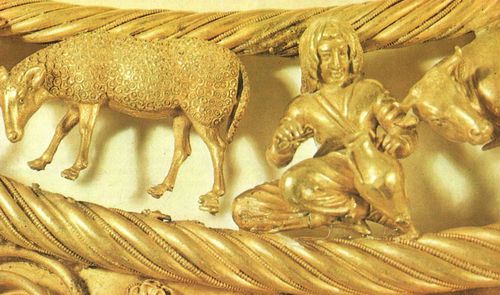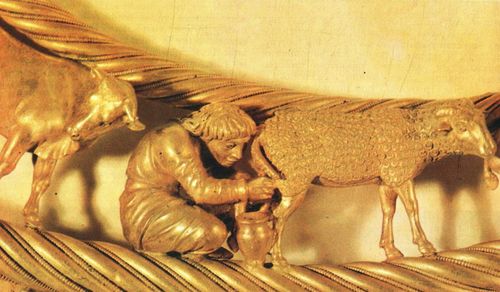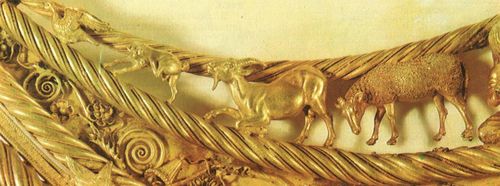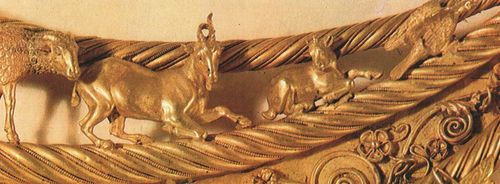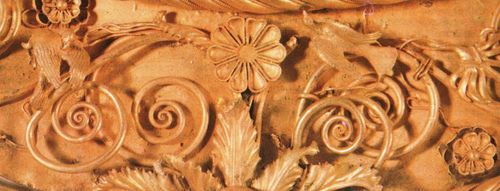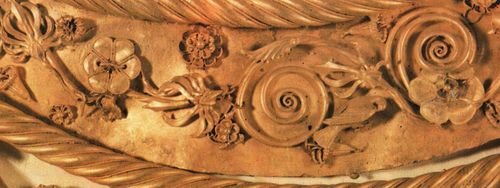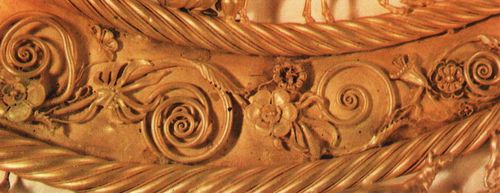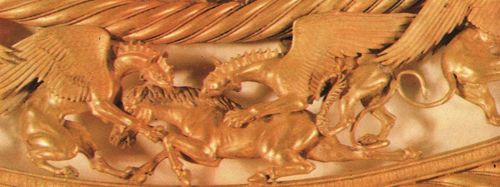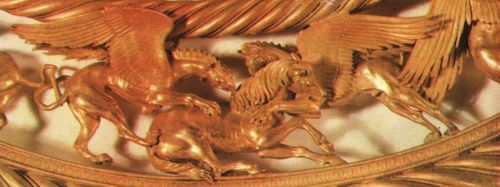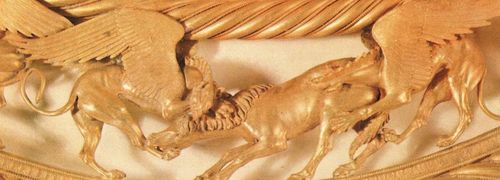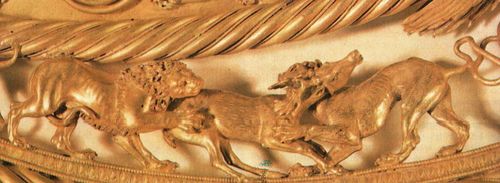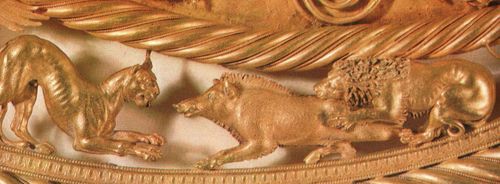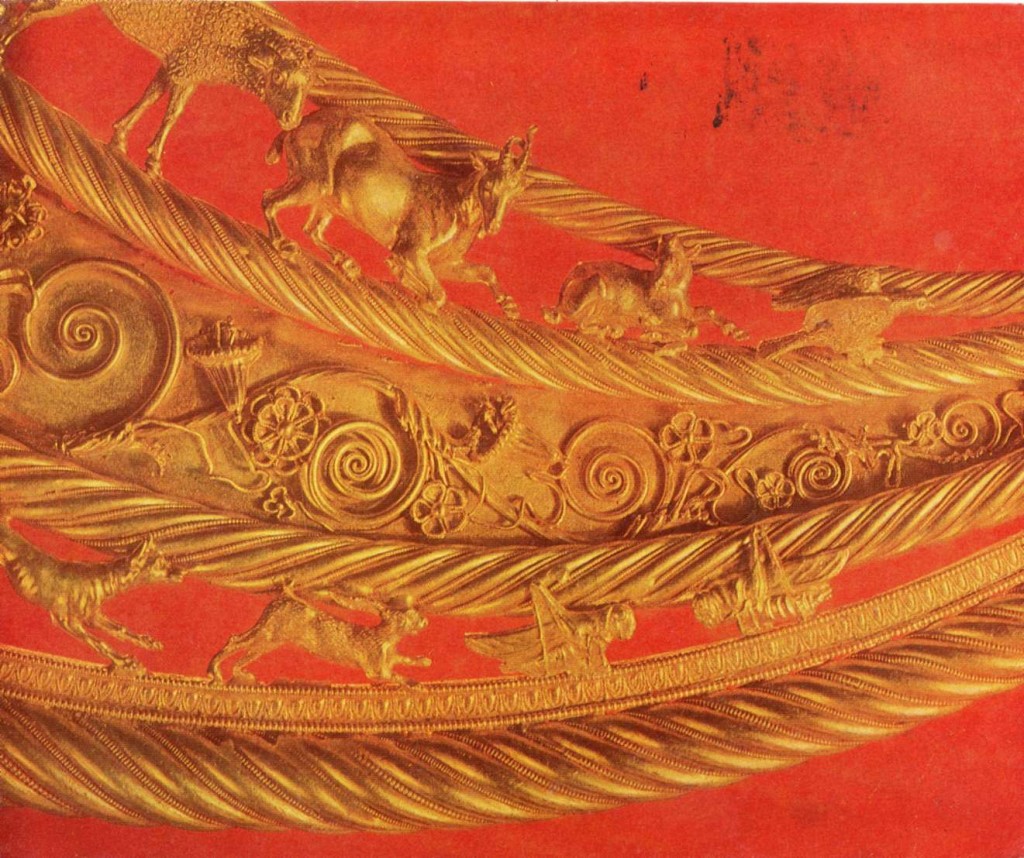This article is about The Scythian Gold Pectoral from Tovsta Mohyla, an ancient artifact that left me breathless from the first time I saw it.
For the Scythians the most sacred and valuable places were their burial grounds. They consisted in kurgans (burial mounds), each of them reflecting the social ranking of the dead.
Judging by their height, the burial mounds are classified in six categories:
- 1 m tall for the common poor Scythians
- 1,5 – 3 m tall for rich people
- 3 – 5 m tall for tribal elders
- 5 – 7,5 m tall for local rulers
- 7,5 – 11 m tall for high Scythian aristocracy
- 14 – 21 m tall for Schythian kings and members of the royal family.
The priests resting places are an exception. They are very well hidden, to prevent the act of profanation and the stilling of their sacred objects.
Believing in life after death, the Scythians were buried with their belongings. Along side Herodot’s writings, the archaeological findings from the kurgans are the most important facts left about the Scythian way of life.
Boris Mozolevski with The Scythian Gold Pectoral
The gold pectoral was found in Tovsta Mohyla, a large Scythian royal kurgan, by the archaeologist and poet, Borys Mozolevsky, in 1971.
Combining several eastern and western jewelry technics (casting, filigree, enameling etc.), this 4th century BC artwork is the best Scythian pectoral ever find. Well balanced and symmetrical, this master piece has a diameter of 30,6 cm and a weight in gold of 1150 g.
Many believes that the pectoral was commissioned by the Scythian king and that was made by a Greek goldsmith.
This fine gold pectoral comes as a story about the Scythian people, combining images of domestic life, with others of nature and wildlife, and with those of mythical creatures, in which they believe.
Three tiers forms the crescent-shaped pectoral. They are contoured by four hallow tubes of twisted gold, who are graduating decreasing through the end.
Both sides of the pectoral showing a great symmetry
The ends of the pectoral are made from bands of gold, decorated with palmette motifs. The clasp is no less impressive, being constructed from two gold lion heads with rings in their mouths.
Left end details of the pectoral
The Scythians were fierce nomadic people, but also good traders and lovers of art. Their best friend, the horse, is pictured from the beginning, as a new born, and also in death (devoured by the griffins).
The inner band, which shows peaceful productive events, contrast with the exterior tier which picture death scenes. It’s nothing unusual, because the Scythian way of life was the combination of these two.
Two Scythians making a sheepskin coat
Despite their bloody reputation (exterminators, human sacrifices, the making of drinking cups from enemies skulls etc.), the Scythians know to value a good peace and they were in trading relations with their neighbors. Some domestic life activities are shown on the inner band of the gold pectoral. In the center we have two long-haired bearded men who are stitching a fleece between them, probably making a sheepskin coat. They are wearing Scythian trousers and their basic weapon, the bow, is also present, inside adorned quivers.
The two Scythians are flanked by pairs of horses and cows with their youngs.
The different hair style of the Scythians suggest that they might be members of different clans.
On the left side we have a cow nursing her calf and a new born foal with his mother.
On the right side we have a horse nursing her foal and a new born calf with his mother.
Respecting the symmetry, they are followed by two young kneeling Scythians with their sheeps, one on each side.
On the left side a young Scythian with an amphora is pictured, near his sheep.
On the right side we have a young Scythian milking his sheep.
Next, on each side, the daily life episode is finished with goats and their youngs, and domestic birds.
The middle register comes as an ode to the beauty of nature.
Center details
Plants, worked in round or in high relief, birds and blossoms (once enameled) are creating an amazing scene on a plate of gold.
Left side details
Right side details
The third tier of the gold pectoral shows their fascination for the wild life, their beliefs, and also their predator mentality.
In the center two griffins are devouring a horse. They are flanked by other two pairs of griffins that are attacking horses.
Left pair of griffins
Right pair of griffins
Next, on the left side, a lion and a leopard are bringing down a stag.
On the other side a leopard and a lion are attacking a boar.
In the same symmetry hounds are hunting hares on each side. And finally, in the corners, two pairs of insects facing each other.
Right side details
This amazing ancient masterpiece can be seen at The Museum of Historical Treasures of Ukraine, in Kiev.
